圣山秀水罗浮山
圣山秀水罗浮山
蒲文强
2021年8月22日
广东惠州罗浮山[1],圣山秀水帅嶺南。
中华祖龙[2]五千里,昂首罗浮望海天。
主宰乾坤佑南海,盛世中华天地宽。
国家五A级[3]景区,方圆五百里仙境。
奇山异峰四百座[4],飞瀑名泉[5]近千处。
七十二洞幽岩石,十八洞天尽奇观。
嶺南第一山川秀,秦汉以来称仙景。
道佛儒教同山旺[6],相得益彰共兴隆。
三十六处洞天在,七十二处福地生。
罗浮圣境四季春,仙客争做罗浮人。
药用植物千多种,珍禽异兽随处见。
柑橙桔柚荔枝香,龙眼柿子杨梅俏。
惬意尝鲜四方客,异口同声表称赞。
奇峰怪石万千形,飞瀑名泉动心眩。
飞云峰下乱云飞,铁桥峰错玉女峰。
骆驼双峰观上界,白漓瀑布白水门。
黄龙瀑布飞白莲,芙蓉地中长生井。
华首寺瞭酥醪观,冲虚观北见黄龙。
葛洪祠[7]中供葛洪,东西南北庵堂殿。
羽化成仙升九霄,抱朴子內外篇[8]寻。
东江纵队纪念馆[9],触境生情忆当年。
一九二七年七月,广东革命燃烽火。
红军英雄古大存,东江红军总指挥。
战略战术皆精明,血火战场显神威。
统帅红军十一军[10],杀敌立功掀竞赛。
后补中委[11]七大选,八大荣光再连任。
一部英雄壮烈史,一曲惊天动地歌。
一九四三年隆冬,东江纵队诞生日[12]。
罗浮山中司令部,指挥中枢连四方。
井岗军魂[13]续渊源,一马当先举帅旗。
中流砥柱东江军,奋勇杀敌上前线。
抗日烽火漫天起,舍生忘死抗敌顽。
集结号中成军旅,坚决听从共产党。
东江健儿英雄汉,抗日战争军功高。
三十九县杀声起,毙伤敌伪过九千。
战斗一千四百次,敌人闻风便丧胆。
一万壮士挡十万,机动纵深把敌歼。
曾生[14]司令指挥好,林平政委智勇全。
王作尧[15]任参谋长,政治主任杨康华[16]。
灵活机动战术妙,横扫千军如捲席。
发展巩固根据地,依靠人民为人民。
解放战争立大功,解放整个广东省。
烈士二千五百名,罗浮丰碑柱国运。
注释:
[1] 广东博罗的罗浮山,是罗山与浮山的合体,在博罗县西北境内东江之滨,距博罗县城35公里。西北分别与增城、龙门接壤,方圆260多平方公里。向来称为百粤群山之祖。
[2]中国国土从北向南五千里,民间传说罗浮山是中华祖龙昂起的龙头,庇佑中华,护佑中国南海平安吉祥。
[3] 罗浮山素有百粤群山之祖、蓬莱仙境之称,这块难得的“风水宝地”是休闲度假、养生健体、消灾纳福、商务洽谈、赏景会友的绝佳胜地。是国家级风景名胜区,2013年12月,被评为国家AAAAA级旅游景区。
[4]罗浮山共有大小山峰432座。
[5]罗浮山飞瀑名泉多达980多处,
[6]罗浮山除道、佛两教外,儒学也很发达。
[7] 该祠供奉着葛洪和鲍姑。葛洪,字稚川,号抱朴子,丹阳句容(今属江苏)人。葛洪13岁丧父,生活贫寒,自幼好学,徒步到各处借阅书笈。以上山砍柴购买纸笔。夜间常以柴火照明,读书抄录。有时为了借书或求教,不惜跋山涉水数千里,不达目的不罢休。由于博览经史百家,近万卷,以儒学知名。十几岁便开始著作《抱朴子外篇》。据说,他为人淡泊寡利,不好荣利。不喜星书、算术、九宫、三棋、太一、飞符之类。晚学风角、望气、三元、遁甲、六壬、太一之法,好神仙导养之法。以郑隐为师,得到他的炼丹诸术后于是南下广州。在罗浮山逗留几年后,归返乡里。司马睿(瑞)时为丞相,赐其关内侯。后历任州主薄、伏波将军、司徒掾(怨)、咨议、参军等职。听说交趾出丹,求为勾漏令。路经广州被刺史邓岳挽留,邓劝洪到罗浮山炼丹,葛洪第二次坐船至东江入罗浮,在罗浮山此次一住三十六年。开辟了岭南的道教圣地,在罗浮山创建了东、西、南、北几座庵堂。八十一时岁吞服自炼九转金丹在罗浮山羽化成仙。 331年(晋成帝咸和六年)葛洪到罗浮山,先后在山中建了东、西、南、北4庵。葛洪及其妻针灸名医鲍姑炼丹、传道、行医。葛洪著述宏富,阐扬道教理论,为道教南宗灵宝派之祖。
[8] 葛洪知识渊博,撰写的著作很多,远远超过司马迁和班固。又善于辨论玄理,分析得非常精辟细致。其主要著作《抱朴子内外篇》,是道教史上一部具有较完整的理论体系和有多种方术的包罗万象的重要著作。是研究我国晋以前道教史不可缺少的资料。
[9] 东江纵队纪念馆,坐落在广东省惠州市博罗县罗浮山朱明洞区内。2003年12月1日,在抗日战争胜利60周年之际,东江纵队纪念馆在罗浮山下建成。“东江纵队纪念馆"馆名,为原全国政协副主席叶选平题写。
东江纵队纪念馆占地面积5584平方米,建筑面积为3300平方米。馆内设4个展示厅及工作服务区,4个展厅分别为“序幕厅”、“陈列厅”、“英烈厅”、“映视厅”,以及两条长60多米、宽3米的参观走廊。馆内展示了500多幅真实的历史照片,陈列了98件文物(主要是东纵战士生活用具)以及缴获的武器,东江纵队《前进报》印刷机、东江纵队、粤赣湘边纵队当年出示的布告等,集中展示了10位英雄人物和5个英雄集体的光辉事迹。
东江纵队纪念馆是广东省爱国主义教育基地、红色旅游示范基地、国防教育基地、党史研究基地。 [1] 2014年8月24日,东江纵队纪念馆被列入第一批国家级抗战纪念设施、遗址名录。
[10] 广东东江工农红军十一军。1930年5月19日,中央军委发出指示信,针对中央军委南方办事处计划将东江地区红军编为两个军的建议,明确表示:“中央不同意这一意见。因为现在红军不是要多立军的名义,而是要充实每一军的内容”,“东江可以成立三师,为红军十一军。”于是,按照中央指示,东江特委遂将东江工农红军总指挥部下辖的第四十六、四十七、四十八、四十九、五十团改编为中国工农红军第十一军,下辖第一、二、三、四、五纵队。全军2500余人。军长古大存,政治委员吴秉泰,参谋长龚楷,政治部主任罗欣然。1930年8月17日,红十一军攻克梅县县城,收缴反动武装甚多,在东江一带声威大振。后来红十一军在转战闽粤边界地区时遭到挫折。1930年12月,红十一军余部改编为东江红军独立第二师。
[11] 抗日战争期间被任命为广东省委常委兼统战部长;并当选为中共七大南方代表团团长兼党支部书记,于1940年12月16日率部抵达延安,担任中央党校第一部学生党支部书记、部主任,参加整风运动。1945年,出席中共七大,当选为中央候补委员。
1956年9月,出席了中共“八大”,再次当选为候补中央委员。
[12] 1943年12月2日,广东人民抗日游击队东江纵队成立。曾生任司令员、尹林平任政治委员、王作尧任副司令员兼参谋长、杨康华政治部主任。 [2]
1945年,朱德同志在“七大”军事报告《论解放区战场》中将东江纵队与琼崖纵队和八路军、新四军并称为“中国抗战的中流砥柱”。
[13] 1926年,大革命的风暴席卷赣南,1927年春,尹林平加入了农民协会。1929年1月,毛泽东、朱德在赣南建立革命根据地,尹林平曾当赤卫队队长。1930年秋,正式加入中国工农红军,参加反“围剿”斗争。年在火线中加入中国共产党,历任红1931军班长、排长、副连长、副大队长、副团长、团长,中共漳州中心县委委员兼军委书记,支队长等职。中央红军长征后,留在福建坚持斗争。不久,全国抗日救亡运动出现高潮,尹林平发起组织了中共厦门临时工作委员会,担任书记,领导厦门地区的抗日救亡运动。1936年11月,到香港向中共南方临时工作委员会汇报工作后,回到福建在闽南特委工作。1937年7月,调到中共南方临时工作委员会工作,担任临工委委员。同年10月,南临委改组为中共南方工作委员会,张文彬任书记,尹林平任武装部长兼外县工委书记。1938年4月,南工委撤销,成立中共广东省委,张文彬任书记,尹林平任省委常委兼军事委员会书记。同年6月,他同省委组织部长李大林在广州召开外围几个县党的军事工作会议,研究如何建立和掌握民众抗日武装问题,要求共产党员积极参加军事工作,努力学习军事,准备开展抗日游击战争。1938年11月,成立中共东江特别委员会,尹林平任书记,领导东江各县的党组织开展抗日游击战争。1940年7月,广东省委决定成立东江前方特别委员会,尹林平兼任书记,还兼任曾生、王作尧两部队的政治委员。1941年底,太平洋战争爆发,香港沦陷,根据中共中央和南方局的指示,配合廖承志把800多位著名的民主人士、文化界人士和国际友人,从香港秘密转移到内地安全区。这一抢救行动的成功,不仅受到党中央来电表扬,而且受到国内外各界人士的赞扬。
因此,东江纵队政委尹林平(又名:林平),在东江纵队继承和发展了井冈山精神,创造性发挥了井冈山斗争中毛泽东、朱德的建军军魂思想。
[14] 曾生(1910年12月-1995年11月20日),原名曾振声 (另说曾振华 [1] )。深圳坪山(原深圳龙岗坪山镇)客家人1943年12月2日,广东人民抗日游击队东江纵队(简称东江纵队)成立,曾生任司令员。率领东江纵队深入港九敌后,挺进粤北山区。1945年7月,任中共广东区委委员。至抗日战争结束,东江纵队已发展成为一支拥有1万多人的人民抗日武装,转战华南39个县、市,收复大片国土,建立6个县级抗日民主政权,根据地和游击区总面积约6万平方公里,人口450余万。对日、伪军作战1400余次,毙伤日、伪军6000余人,俘虏3500余人,消灭了日军的有生力量,牵制了日军的大量兵力,为华南敌后抗战和全国抗日战争的胜利作出了贡献。
1936年加入中国共产党。1955年授少将。获三级八一勋章、一级独立自由勋章、一级解放勋章。是第一、二、三届全国人大代表,第五届全国人大常务委员会会员,中共第十二次代表大会代表,中共中央顾问委员会委员。
[15] 王作尧(1913年—1990年7月3日)广东省东莞县厚街人。1931年考入广东军政学校,1936年入党。1938年在家乡组建抗日武装,后任东江纵队副司令员兼参谋长。 1936年加入中国共产党。中华人民共和国成立后,任广东军区江防司令部副司令员,广东军区副参谋长,防空司令部司令员,中南军区防空司令部第一副司令员,沈阳军区空军,武汉军区空军副司令员,广东省军区顾问。一九六一年晋升为少将军衔。
[16] 1943年12月2日,广东人民抗日游击总队在坪山扩编成立广东人民抗日游击队东江纵队,曾生任司令员,林平任政治委员,王作尧任副司令员兼参谋长,杨康华任政治部主任。下辖第2、第3、第5大队、惠阳大队、宝安大队、港九大队、护航大队,共3000余人。东江纵队成立后,积极开展杀敌立功竞赛和拥政爱民及扩军运动,并向日伪军连续出击,至1944年6月,进行战斗148次,歼灭日伪军1000余人,迫使伪军1个营和伪自卫军1个暂编团团部投诚,纵队总人数发展到近5000人。7月,东江纵队军政干部学校在大鹏镇成立。9月,东江纵队从惠阳大队、护航大队、港九大队抽调人员组成独立第3大队,进入罗浮山地区,为建立根据地作准备;以第2、第3大队各一部组成北上抗日先遣队,挺进粤北,一度解放清远县城。9月~1945年2月,东江纵队将所属部队扩编为第1、第2、第3、第4、第5、第6、第7支队和北江支队、西北支队,连同大亚湾人民抗日自卫总队、港九大队、护航大队等,共9200余人。1945年2月底,北江支队、西北支队在粤汉铁路(广州―武昌)两侧开辟清远、英德、佛冈、新丰、翁源抗日游击区。3月,第3支队进入博罗,会同第4、第5支队创建以罗浮山为中心的抗日根据地。5月,纵队领导机关由东江南岸转移至江北罗浮山,游击区域逐渐向粤北和粤东发展。8月初,根据中共中央关于向粤北发展、开辟五岭根据地的指示,东江纵队组成粤北指挥部,率第3、第5支队和北江支队、西北支队等向粤赣湘边挺进,准备与王震率领的八路军南下支队会合,后因遭国民党军围攻,会合未成。其间,珠江纵队第1支队、独立第3大队和第2支队一部共1000余人编入东江纵队。日本投降后,东江纵队向拒绝投降的日伪军展开反攻。至9月底,收复城镇60余座,歼灭日伪军1000余人。纵队总人数发展到1.1万余人。10月,为加强分区指挥,又成立江南、江北、东进指挥部。1946年6月,根据国共两党达成的协议,东江纵队(含珠江、韩江纵队,广东、广东南路人民抗日解放军部分骨干)2500余人北撤山东省烟台解放区,其余人员大部就地复员,留400余名武装骨干分散坚持斗争。
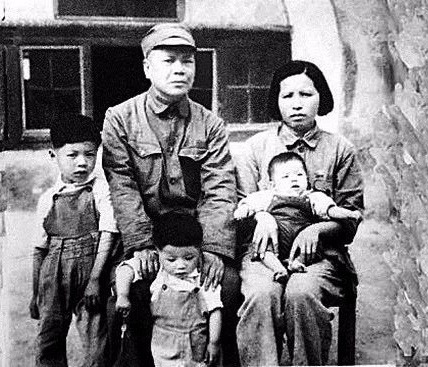
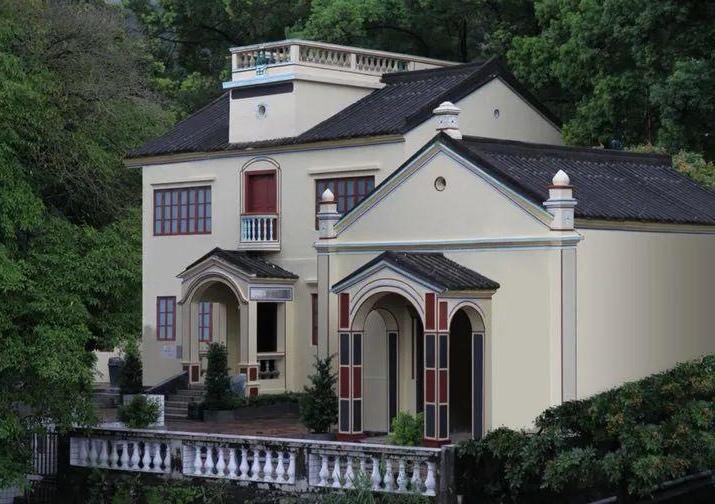
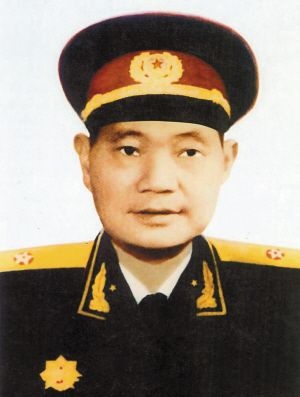
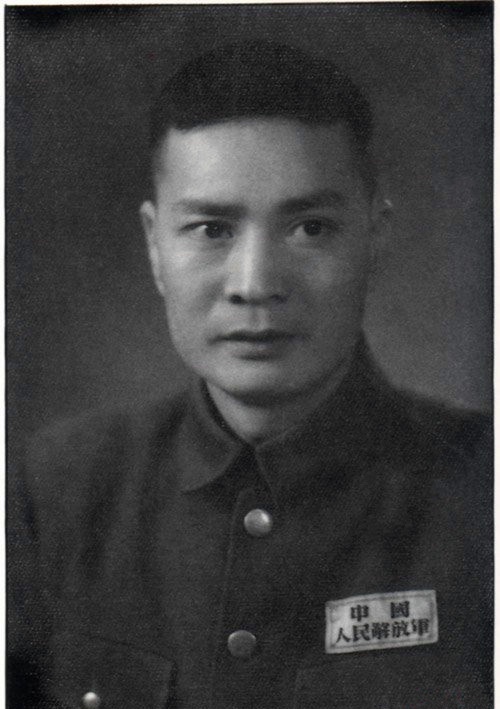
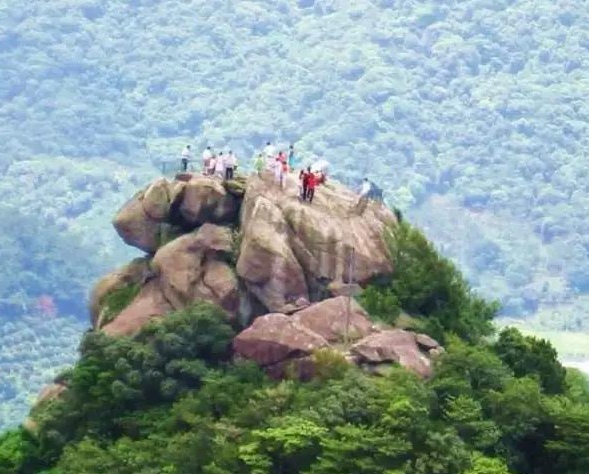
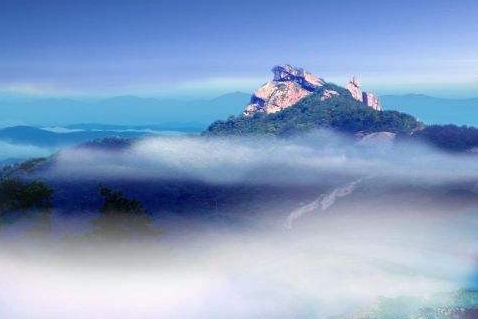
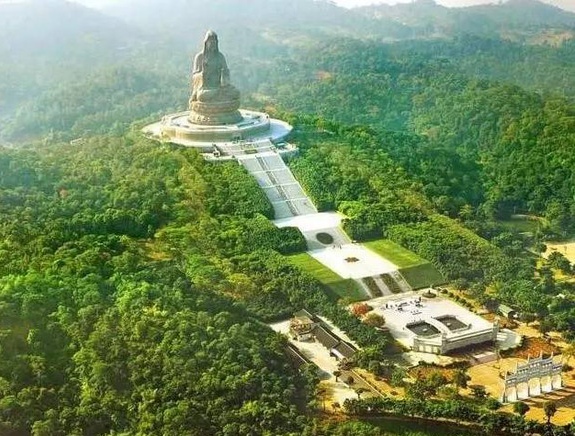

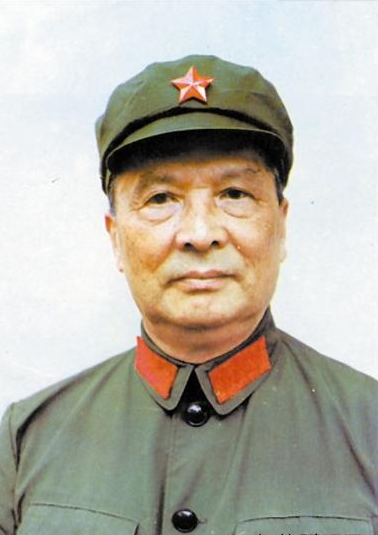
Holy mountain Xiushui Luofu Mountain
Pu Wenqiang
August 22, 2021
Luofu Mountain in Huizhou, Guangdong Province [1], the holy mountain, beautiful water and handsome Lingnan.
The Chinese ZuLong [2] is five thousand miles away, looking up at the sea and sky.
Dominate heaven and earth and protect the South China Sea. In the prosperous times, China has a wide world.
National 5A [3] scenic spot, a fairyland with a radius of 500 miles.
There are 400 strange mountains and peaks [4], and nearly a thousand famous waterfalls and springs [5].
Seventy two caves are secluded rocks and eighteen caves are wonders.
Lingnan has the first beautiful mountains and rivers, which has been called Xianjing since the Qin and Han Dynasties.
Taoism, Buddhism and Confucianism, together with Shanwang [6], complement each other and prosper together.
There are 36 caves in the sky and 72 blessed places.
In the holy land of Luofu, there are four seasons of spring, and fairies strive to be Luofu people.
There are more than 1000 kinds of medicinal plants, and rare birds and animals can be seen everywhere.
Citrus, pomelo, litchi, longan, persimmon and bayberry.
It's pleasant to taste fresh food, and all the guests praise it with one voice.
There are thousands of strange peaks and rocks, and the waterfalls and famous springs are dizzy.
Under the Feiyun peak, clouds fly in disorder, and the iron bridge peak is wrong with the jade girl peak.
The upper boundary of camel bimodal view, baishuimen of Baili waterfall.
Huanglong waterfall, flying white lotus, hibiscus field, Changsheng well.
At Huashou temple, you can see the crisp mash view, and at Chongxu view, you can see Huanglong in the north.
Gehong temple [7] is dedicated to Gehong, East, West, North and South nunnery halls.
Eclosion into a fairy rises into the sky, holding Puzi inside and outside [8].
Dongjiang column Memorial Hall [9], touching the environment, recalling the year.
In July 1927, the Guangdong revolution ignited flames of war.
Gu Dacun, the hero of the Red Army, is the commander in chief of the Dongjiang Red Army.
The strategy and tactics are smart, and the blood fire battlefield shows divine power.
He commanded the 11th army of the Red Army [10] and made meritorious contributions to kill the enemy.
After the seventh general election of the CPC Central Committee [11], the eight honors were re elected.
A heroic history, an earth shaking song.
In the deep winter of 1943, Dongjiang column was born [12].
Luofu Mountain command, command center, company and four directions.
Jinggang military soul [13] continues its origin and takes the lead in raising the handsome flag.
Dongjiang army, the mainstay, fought bravely to the front.
The war of resistance against Japan started all over the sky, and he sacrificed his life to resist the enemy.
Assemble the Zhongcheng military brigade and resolutely obey the Communist Party.
Dongjiang hero hero, high military merit in the war of resistance against Japan.
Thirty nine counties began to kill, killing and wounding more than 9000 enemy and puppet soldiers.
After 1400 battles, the enemy was frightened at the wind.
Ten thousand strong men blocked one hundred thousand and annihilated the enemy in depth.
Commander Zeng Sheng [14] commands well, and political commissar Lin Ping Zhi Yongquan.
Wang zuoyao [15] served as chief of staff and Yang Kanghua, political director [16].
Flexible and tactical, sweeping thousands of troops like a roll of seats.
Develop and consolidate base areas and rely on the people for the people.
The war of liberation made great contributions and liberated the whole Guangdong Province.
There are 2500 martyrs, Luo Fufeng's stele and the national fortune.
notes:
[1] Luofu Mountain in Boluo, Guangdong Province is the combination of Luoshan mountain and Fushan mountain. It is on the shore of Dongjiang River in the northwest of Boluo County, 35 kilometers away from BOLUO county. The northwest borders Zengcheng and Longmen respectively, covering an area of more than 260 square kilometers. It has always been called the ancestor of the mountains in Baiyue.
[2] China's territory is 5000 miles from north to south. According to folklore, Luofu Mountain is the leader of the Chinese ancestral dragon, protecting China and the peace and auspiciousness of the South China Sea.
[3] Luofu Mountain is known as the ancestor of mountains in Guangdong and Penglai Wonderland. This rare "feng shui treasure land" is an excellent resort for leisure and vacation, health preservation, disaster elimination and blessing, business negotiation, sightseeing and meeting friends. It is a national scenic spot. In December 2013, it was rated as a national AAAAA scenic spot.
[4] There are 432 peaks and small peaks in Luofu Mountain.
[5] There are more than 980 famous waterfalls and springs in Luofu Mountain,
[6] In addition to Taoism and Buddhism, Confucianism is also very developed in Luofu Mountain.
[7] Ge Hong and Bao Gu are enshrined in the temple. Ge Hong, with the word Zhichuan, the number baopuzi, is from Jurong, Danyang (now Jiangsu). Ge Hong lost his father at the age of 13. He lived in poverty and was eager to learn from childhood. He borrowed books everywhere on foot. Go up the mountain to cut firewood and buy paper and pens. At night, they often use firewood for lighting, reading and copying. Sometimes, in order to borrow books or seek advice, they do not hesitate to travel thousands of miles, and do not stop until they reach their goals. Due to the exposition of hundreds of classics and nearly 10000 volumes, it is well-known for Confucianism. As a teenager, he began to write "Bao Pu Zi Wai Pian". It is said that he is indifferent to few interests and bad for glory and profit. I don't like Xingshu, arithmetic, Jiugong, Sanqi, Taiyi, feifu and so on. In the evening, learn the methods of Fengjiao, Wangqi, Sanyuan, dunjia, Liuren and Taiyi, and be good at the guidance and cultivation of immortals. Taking Zheng Yin as his teacher, he got his alchemy and went south to Guangzhou. After staying in Luofu Mountain for several years, he returned home. Sima Rui (Rui) was the prime minister and was granted the Marquis of the pass. After that, he successively served as governor Bo, general Fubo, situ fan (resentment), counsellor and joined the army. It's said that Jiaozhi pill comes out. I beg for a loophole order. After passing through Guangzhou, he was detained by Deng Yue, an assassin. Deng Quanhong went to Luofu Mountain to refine pills. Ge Hong took a boat to Dongjiang to Luofu for the second time. He lived in Luofu Mountain for 36 years this time. It opened up a Taoist Holy Land in Lingnan and created several nunneries in the East, West, South and north of Luofu Mountain. At the age of 81, he swallowed the self refining nine turn gold pill and became an immortal in Luofu Mountain. In 331 (the sixth year of Xianhe of emperor Cheng of Jin Dynasty), Ge Hong went to Luofu Mountain and built four nunneries in the East, West, South and North. Ge Hong and his wife Bao Gu, a famous acupuncture doctor, practice alchemy, preaching and medicine. Ge Hong is the founder of Lingbao sect of the Southern Sect of Taoism.
[8] Ge Hong is knowledgeable and writes many works, far more than Sima Qian and Ban Gu. He is also good at debating metaphysics and analyzes it very incisively and carefully. His main work, baopuzi's internal and external chapters, is an important and all encompassing work with a relatively complete theoretical system and a variety of prescriptions in the history of Taoism. It is an indispensable material for studying the history of Taoism before Jin Dynasty.
[9] Dongjiang column memorial hall is located in zhumingdong District, Luofu Mountain, BOLUO County, Huizhou City, Guangdong Province. On December 1, 2003, on the occasion of the 60th anniversary of the victory of the Anti Japanese War, the memorial hall of Dongjiang column was built at the foot of Luofu Mountain“ The name of Dongjiang column memorial hall is inscribed by Ye Xuanping, former vice chairman of the CPPCC National Committee.
Dongjiang column Memorial Hall covers an area of 5584 square meters and a construction area of 3300 square meters. There are four exhibition halls and work service areas in the museum. The four exhibition halls are "Prelude hall", "exhibition hall", "Hero Hall" and "Yingshi hall", as well as two visiting corridors more than 60 meters long and 3 meters wide. The museum displays more than 500 real historical photos, 98 cultural relics (mainly the living utensils of the soldiers of the Dongjiang column) and seized weapons, as well as the notices produced by the printing press of the Qianjin daily of the Dongjiang column, the Dongjiang column and the Guangdong Jiangxi Hunan border column in that year, focusing on the glorious deeds of 10 heroes and 5 heroic groups.
Dongjiang column memorial hall is a patriotism education base, red tourism demonstration base, national defense education base and party history research base in Guangdong Province[ 1] On August 24, 2014, the memorial hall of Dongjiang column was listed in the list of the first batch of national anti Japanese War Memorial facilities and sites.
[10] The 11th army of Guangdong Dongjiang workers' and peasants' Red Army. On May 19, 1930, the Central Military Commission issued an instruction letter, in response to the proposal of the South Office of the Central Military Commission to organize the Red Army in Dongjiang area into two armies, which clearly stated: "the Central Military Commission does not agree with this opinion. Because now the Red Army does not want to build more troops, but to enrich the content of each army. "Dongjiang can set up three divisions to serve the eleventh army of the Red Army." Therefore, according to the instructions of the Central Committee, the Dongjiang special committee reorganized the 46th, 47th, 48th, 49th and 50th regiments under the general headquarters of the Dongjiang workers' and peasants' Red Army into the 11th army of the Chinese workers' and peasants' Red Army, under which the first, second, third, fourth and fifth columns were under the jurisdiction. There are more than 2500 people in the army. Gu Dacun, military commander, Wu Bingtai, political commissar, Gong Kai, chief of staff, and Luo Xinran, director of the political department. On August 17, 1930, the Red Army captured Meixian County and seized a large number of reactionary armed forces, which made a great reputation in the Dongjiang area. Later, the red army suffered a setback when it moved to the Fujian Guangdong border area. In December 1930, the rest of the Red Army was reorganized into the second independent division of the Dongjiang Red Army.
[11] During the Anti Japanese War, he was appointed member of the Standing Committee of the CPC Guangdong Provincial Committee and Minister of United Front work; He was elected head of the southern delegation and Secretary of the Party branch of the Seventh National Congress of the Communist Party of China. He led the Department to Yan'an on December 16, 1940, served as secretary and director of the first student Party branch of the Central Party school, and participated in the rectification movement. In 1945, he attended the Seventh National Congress of the Communist Party of China and was elected as an alternate member of the Central Committee.
In September 1956, he attended the Eighth National Congress of the Communist Party of China and was re elected as an alternate member of the Central Committee.
[12] On December 2, 1943, the Guangdong People's Anti Japanese guerrilla Dongjiang column was established. Zeng Sheng served as commander, Yin Linping as political commissar, Wang zuoyao as deputy commander and chief of staff, and Yang Kanghua as director of the political department[ 2]
In 1945, Comrade Zhu De called the Dongjiang column, QiongYa column, the Eighth Route Army and the New Fourth Army "the mainstay of China's Anti Japanese War" in the "on the battlefield of the liberated areas" military report of the Seventh National Congress.
[13] In 1926, the storm of the great revolution swept through southern Jiangxi. In the spring of 1927, Yin Linping joined the farmers' Association. In January 1929, Mao Zedong and Zhu De established a revolutionary base in southern Jiangxi. Yin Linping was once the captain of the Red Guard. In the autumn of 1930, he officially joined the Chinese workers' and peasants' Red Army and participated in the struggle against "encirclement and suppression". In, he joined the Communist Party of China in the line of fire and successively served as the monitor, platoon commander, deputy company commander, deputy captain, deputy head and head of the red 1931 army, member of the CPC Zhangzhou central county Party committee and Secretary of the Military Commission, branch leader and so on. After the Long March, the central red army stayed in Fujian and persisted in the struggle. Soon, the national anti Japanese and national salvation movement reached a climax. Yin Linping initiated and organized the CPC Xiamen interim Working Committee as secretary to lead the Anti Japanese and national salvation movement in Xiamen. In November 1936, after reporting to the southern provisional Working Committee of the Communist Party of China in Hong Kong, he returned to Fujian to work in the southern Fujian Special Committee. In July 1937, he was transferred to the southern provisional Working Committee of the Communist Party of China as a member of the provisional Working Committee. In October of the same year, the southern provisional Committee was reorganized into the southern Working Committee of the Communist Party of China, with Zhang Wenbin as the Secretary and Yin Linping as the Minister of armed forces and Secretary of the working committee of other counties. In April 1938, the southern Working Committee was abolished and the Guangdong provincial Party committee of the Communist Party of China was established, with Zhang Wenbin as secretary and Yin Linping as member of the Standing Committee of the provincial Party committee and Secretary of the Military Commission. In June of the same year, he and Li Dalin, the organization Minister of the provincial Party committee, held a party's military work conference in several peripheral counties in Guangzhou to study how to establish and master the people's Anti Japanese armed forces, and asked Communists to actively participate in military work, study the military and prepare for the Anti Japanese guerrilla war. In November 1938, the CPC Dongjiang special committee was established with Yin Linping as secretary to lead the party organizations in Dongjiang counties to carry out the Anti Japanese guerrilla war. In July 1940, the Guangdong provincial Party committee decided to establish a special committee in front of Dongjiang. Yin Linping served as secretary and political member of Zeng Sheng and Wang zuoyao. At the end of 1941, the Pacific War broke out and Hong Kong fell. According to the instructions of the CPC Central Committee and the Southern Bureau, Liao Chengzhi secretly transferred more than 800 famous Democrats, cultural circles and international friends from Hong Kong to the mainland security zone. The success of this rescue operation was praised not only by the Party Central Committee, but also by people from all walks of life at home and abroad.
Therefore, Yin Linping (also known as Lin Ping), political commissar of the Dongjiang column, inherited and developed the Jinggangshan Spirit in the Dongjiang column and creatively gave full play to the military soul thought of Mao Zedong and Zhu De in the Jinggangshan struggle.
[14] Zeng Sheng (December 1910 November 20, 1995), formerly known as Zeng Zhensheng (another name is Zeng Zhenhua [1]). Hakka in Pingshan, Shenzhen (formerly Pingshan Town, Longgang, Shenzhen). On December 2, 1943, the Dongjiang column of the Guangdong People's Anti Japanese guerrilla group (hereinafter referred to as the Dongjiang column) was established and once served as the commander. Led the Dongjiang column deep behind the enemy lines in Hong Kong and Kowloon and advanced into the mountainous areas of northern Guangdong. In July 1945, he served as a member of the CPC Guangdong District Committee. By the end of the Anti Japanese War, the Dongjiang column had developed into a people's Anti Japanese armed force with more than 10000 people, moved to 39 counties and cities in South China, recovered a large area of land, and established six Anti Japanese democratic regimes at the county level. The total area of base areas and guerrilla areas was about 60000 square kilometers and the population was more than 4.5 million. They fought more than 1400 times against the Japanese and puppet forces, killed and wounded more than 6000 Japanese and puppet forces, captured more than 3500 people, eliminated the effective strength of the Japanese army, contained a large number of Japanese troops, and contributed to the victory of the Anti Japanese war behind the enemy lines in South China and the national anti Japanese war.
He joined the Communist Party of China in 1936. Major general in 1955. Won the three-level Bayi medal, the first-level independent freedom medal and the first-level Liberation Medal. He is a deputy to the first, second and third National People's congresses, a member of the Standing Committee of the Fifth National People's Congress, a representative to the Twelfth Congress of the Communist Party of China, and a member of the Advisory Committee of the Central Committee of the Communist Party of China.
[15] Wang zuoyao (1913-july 3, 1990) was born in Houjie, Dongguan County, Guangdong Province. He was admitted to Guangdong military and political school in 1931 and joined the party in 1936. In 1938, he established the Anti Japanese armed forces in his hometown and later served as deputy commander and chief of staff of Dongjiang column. He joined the Communist Party of China in 1936. After the founding of the people's Republic of China, he served as deputy commander of the Jiangfang command of the Guangdong military region, deputy chief of staff of the Guangdong military region, commander of the air defense command, first deputy commander of the air defense command of the Central South military region, deputy commander of the air force of the Shenyang Military Region, deputy commander of the air force of the Wuhan military region, and adviser to the Guangdong military region. He was promoted to the rank of major general in 1961.
[16] On December 2, 1943, the Guangdong People's Anti Japanese guerrilla Corps expanded and established the Dongjiang column of the Guangdong People's Anti Japanese guerrilla Corps in Pingshan. Zeng Sheng was the commander, Lin Ping was the political commissar, Wang zuoyao was the deputy commander and chief of staff, and Yang Kanghua was the director of the political department. It has jurisdiction over the 2nd, 3rd and 5th brigade, Huiyang brigade, Bao'an brigade, Hong Kong Kowloon brigade and escort brigade, with a total of more than 3000 people. After the establishment of Dongjiang column, it actively carried out the competition of killing the enemy, supporting the government and the people and expanding the army, and launched continuous attacks on the Japanese puppet army. By June 1944, it had fought 148 times, annihilated more than 1000 Japanese puppet army, forced one battalion of the puppet army and one temporary regiment of the puppet self defense army to surrender, and the total number of the column had grown to nearly 5000. In July, the military and political Cadre School of Dongjiang column was established in Dapeng town. In September, Dongjiang column transferred personnel from Huiyang brigade, escort brigade and Hong Kong Kowloon brigade to form an independent third brigade into Luofu Mountain area to prepare for the establishment of base areas; The 2nd and 3rd Brigade formed an anti Japanese advance team to the north, advanced into northern Guangdong and liberated Qingyuan County for a time. From September to February 1945, Dongjiang column expanded its troops into the 1st, 2nd, 3rd, 4th, 5th, 6th and 7th detachment, Beijiang detachment and northwest detachment, together with Daya Bay people's Anti Japanese Self Defense Corps, Hong Kong Kowloon brigade and escort brigade, with a total of more than 9200 people. At the end of February 1945, the Beijiang detachment and the northwest detachment opened up Anti Japanese guerrilla zones in Qingyuan, Yingde, Fogang, Xinfeng and Wengyuan on both sides of the Guangdong Han Railway (Guangzhou Wuchang). In March, the third detachment entered BOLUO and, together with the fourth and fifth detachment, established an anti Japanese base area centered on Luofu Mountain. In May, the leadership of the column was transferred from the South Bank of Dongjiang River to Luofu Mountain in Jiangbei, and the guerrilla area gradually developed to northern and eastern Guangdong. In early August, according to the instructions of the CPC Central Committee on developing and opening up five ridge base areas in northern Guangdong, the Dongjiang column formed the northern Guangdong headquarters, led the 3rd and 5th detachment, the Beijiang detachment and the northwest detachment to advance to the Guangdong Jiangxi Hunan border, and prepared to meet with the southward detachment of the Eighth Route Army led by Wang Zhen. Later, due to the siege of the Kuomintang army, the meeting failed. Meanwhile, more than 1000 people from the first detachment, the third independent brigade and the first division of the second detachment of the Pearl River column were incorporated into the Dongjiang column. After Japan's surrender, the Dongjiang column launched a counter offensive against the Japanese puppet army that refused to surrender. By the end of September, more than 60 towns were recovered and more than 1000 Japanese puppet troops were wiped out. The total number of columns increased to 1.1
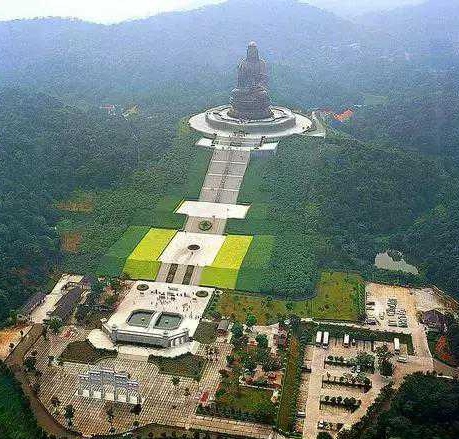

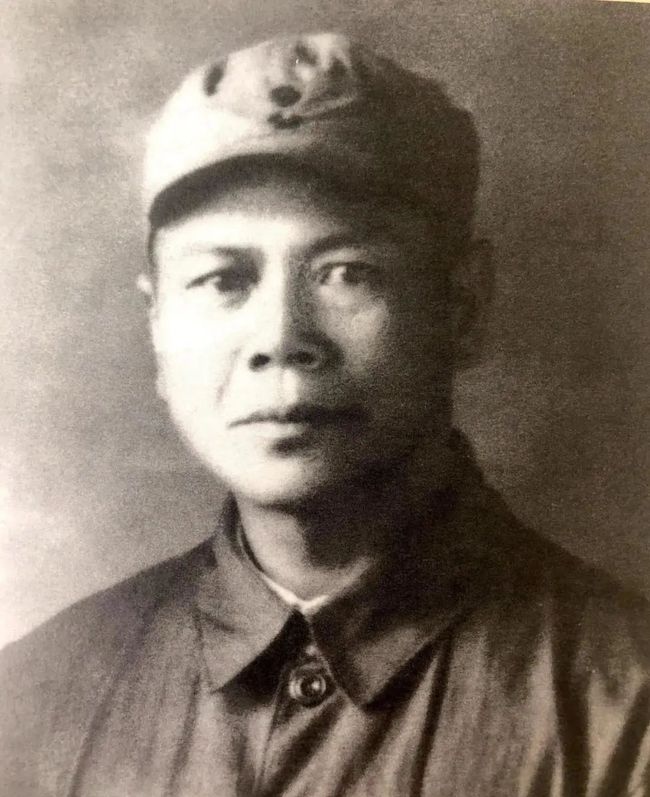
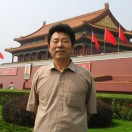
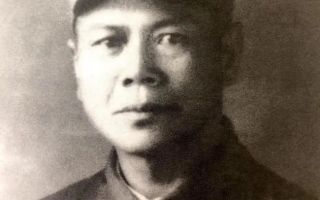
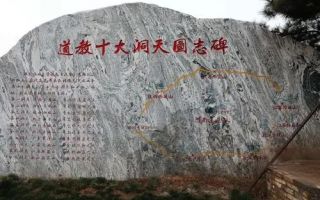
0 条 评 论 Write a Response